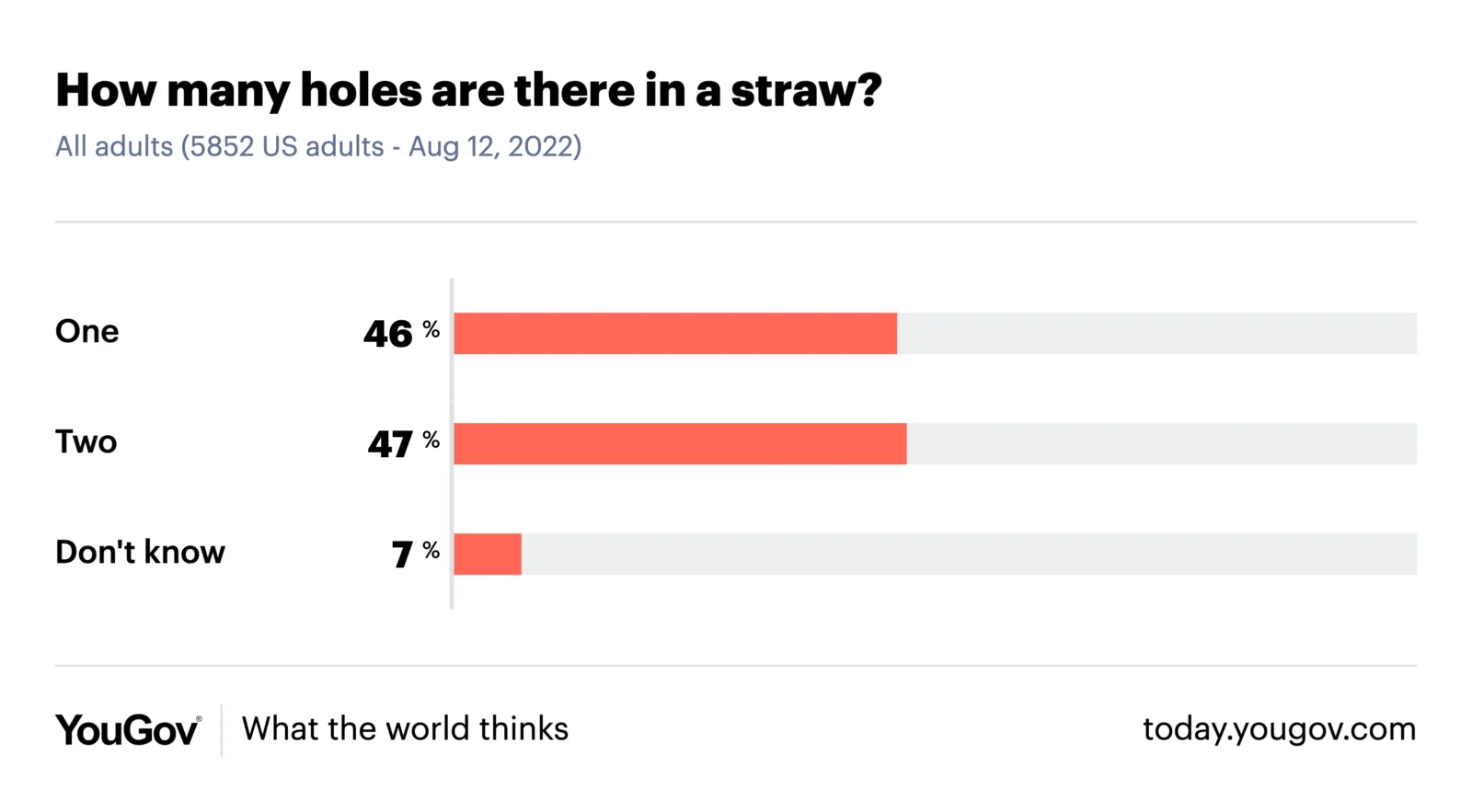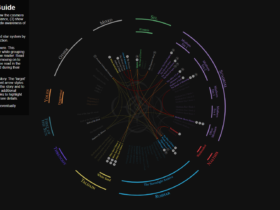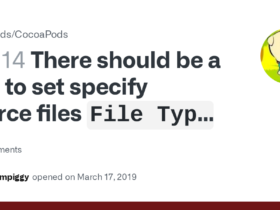When you think about a straw, it seems so simple—just a small tube for sipping your favorite drinks. But when you stop and ask, “How many holes does a straw have?” the question suddenly feels less simple. This topic has sparked countless debates online, in classrooms, and even among scientists. So, let’s dive deep into this mind-boggling question and settle it once and for all.
What’s a Hole, Really?
Before we can decide how many holes a straw has, we need to define what a “hole” actually is. In simple terms, a hole is an empty space that goes through or into an object. It can be a gap, an opening, or even a depression on a surface. For example, a donut has a hole in the middle, and a needle has one at its end.
But not all holes are the same. Some holes are two-dimensional, like the opening of a bag, while others are three-dimensional, like a tunnel that goes all the way through a mountain. So, when it comes to a straw, the debate boils down to this: Is a straw’s opening one continuous hole, or does it have two distinct holes—one on each end?
How Many Holes Does a Straw Have?
If you’re holding a straw right now, take a good look at it. You’ll see an opening on one end and another opening on the other end. At first glance, it might seem like there are two holes—one at the top and one at the bottom.
But here’s the tricky part: some people argue that the straw has just one hole. They say it’s like a tunnel or a pipe—a single hole that stretches from one end to the other. This idea might sound strange but think about it: if you poke a hole through a piece of paper, it creates one continuous pathway from one side of the paper to the other. By this logic, a straw could also have just one hole.
Why Do People Disagree About This?
The main reason people argue about this question is that the definition of a “hole” is not universally agreed upon. To some, a hole is simply any opening. So, they count the top and bottom openings of the straw as two separate holes.

Others argue that a hole is defined by its connectivity. In their view, a hole is a single pathway that connects two points. For these people, the straw has just one hole because the openings at both ends are part of the same connected tunnel.
Let’s break this debate down further by looking at what scientists, logic, and even common sense have to say.
What Do Scientists Say About Holes?
Scientists, especially in the fields of geometry and topology (the study of shapes and spaces), often describe a hole as a single opening that creates a continuous passage through an object. Using this approach, a straw would be considered to have one hole because it has a single pathway from one end to the other.
Topology doesn’t care about the size or shape of the hole. A donut, for instance, is topologically the same as a straw—they both have one continuous hole. This might feel counterintuitive, but it’s how mathematicians think about objects and their structures.
The Logical Way to Think About a Straw
Imagine slicing the straw in half lengthwise. When you do this, you’ll see that the interior of the straw is one long, unbroken tunnel. This tunnel isn’t divided into two parts; it’s a single connected space. From this perspective, it’s logical to say that the straw has one hole.
On the other hand, some argue that each end of the straw feels like its own separate hole. But if you connect the two ends of a straw, like making a loop, it becomes even clearer that the straw is just one continuous hole.
Is This a Trick Question?
To many people, this debate feels like a trick question—one designed to confuse you. After all, we’re not used to thinking about holes in such an abstract way. But rest assured, this isn’t about tricking anyone; it’s about exploring how we understand objects and their structures.
The One-Hole Theory vs. The Two-Hole Theory
Let’s compare these two theories more directly:
- The One-Hole Theory: People who believe in this theory argue that a straw is a single, continuous object with one hole that stretches from one end to the other. This idea aligns with how scientists and mathematicians think about shapes and spaces.
- The Two-Hole Theory: Supporters of this theory believe that each end of the straw counts as its own hole. They think of the straw as having two separate openings, similar to a pipe with two ends.
Both perspectives are valid depending on how you define a hole, which is why the debate continues.
What Do Kids Think?
If you ask a group of kids how many holes a straw has, their answers might surprise you. Many kids instinctively say two because they see two openings—one at the top and one at the bottom. Others might say one because they think of the straw as a single tunnel.
Interestingly, kids often think about this question in simpler terms than adults. They don’t get bogged down in the technical details or mathematical definitions. Their answers remind us that sometimes, the simplest explanation is the most satisfying one.
What’s the Real Answer?
So, what’s the truth? Does a straw have one hole or two? The answer depends on your perspective.

If you think of a hole as a single continuous passageway, the straw has one hole. But if you think of a hole as any opening, then the straw has two holes—one on each end. Neither answer is wrong, and that’s what makes this question so fascinating.
The Math of Holes in a Straw
In mathematics, holes are often described using concepts from topology. In this field, objects are studied based on their shapes and structures rather than their physical appearances. A straw, much like a donut, has what’s called a “genus of one.” This means it has one continuous hole, regardless of how it’s oriented or shaped.
If you apply this math to a straw, it confirms the one-hole theory. The straw is essentially a hollow cylinder with one connected pathway.
How Straws Work in Real Life
From a practical standpoint, the number of holes in a straw doesn’t really matter. Whether it has one hole or two, the straw functions the same way—it allows liquid to flow from one end to the other. But thinking about this question can help us better understand how everyday objects work and how our brains process abstract ideas.
Can a Straw Have Zero Holes?
This might sound absurd, but some people argue that a straw has zero holes. Their reasoning is that the entire straw is a hollow object, and the openings on each end don’t count as holes—they’re just the ends of the tube. While this perspective is less common, it’s another example of how differently people interpret the concept of a “hole.”
Why Does This Question Matter?
At first glance, the question of how many holes a straw has might seem trivial. But it actually touches on some deeper ideas about how we understand the world. By thinking about this question, we’re forced to consider how we define everyday objects and how different perspectives can lead to different answers.
It’s also a great way to explore how math, science, and logic intersect with our everyday experiences. Plus, it’s a fun conversation starter that can spark curiosity and debate among people of all ages.
The Bottom Line
So, does a straw have one hole or two? The answer depends on how you define a hole and how you look at the straw. From a scientific and mathematical perspective, the straw has one continuous hole. But if you think of a hole as an opening, then the straw has two holes—one on each end.
At the end of the day, there’s no single “correct” answer to this question. What matters most is how we approach it—with curiosity, open-mindedness, and a willingness to see things from different perspectives. So next time someone asks you how many holes a straw has, you can confidently say, “It depends!”














Leave a Reply